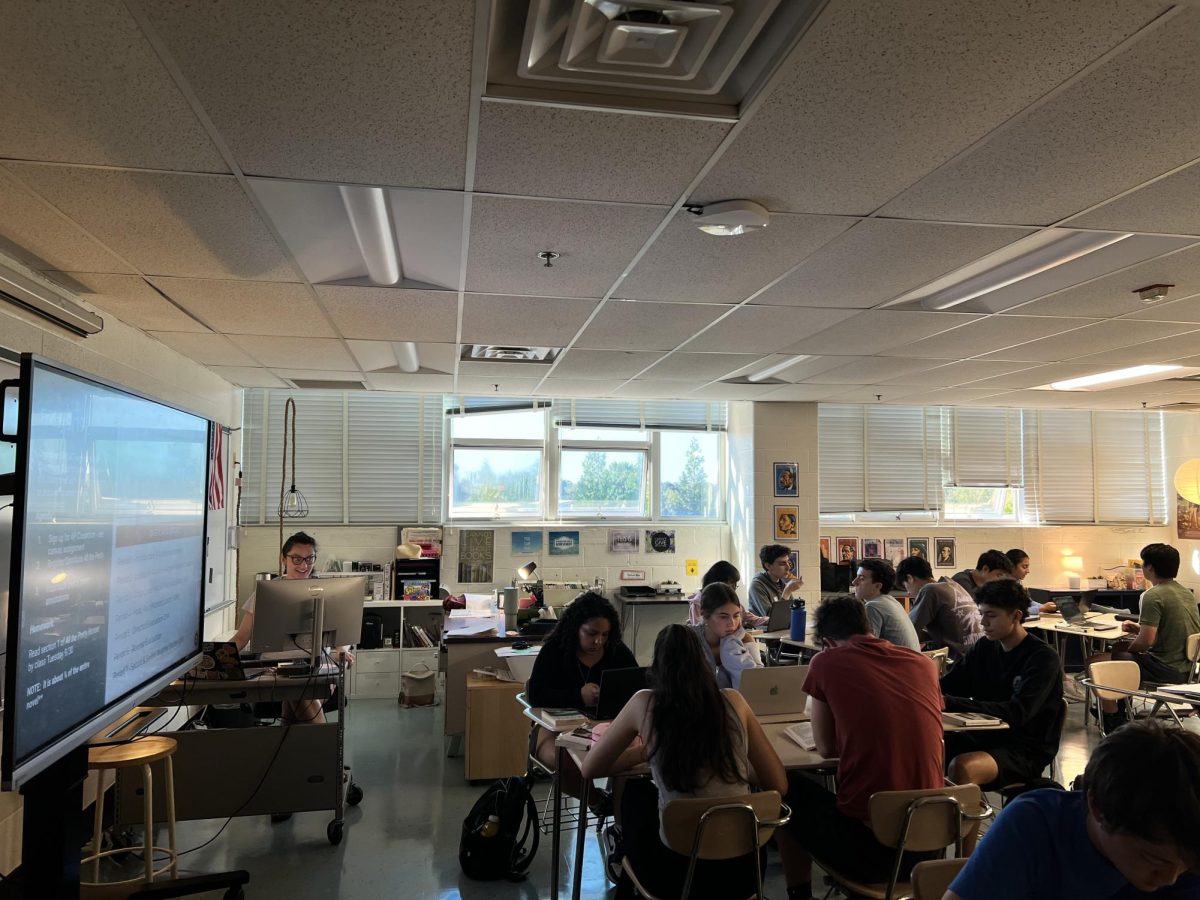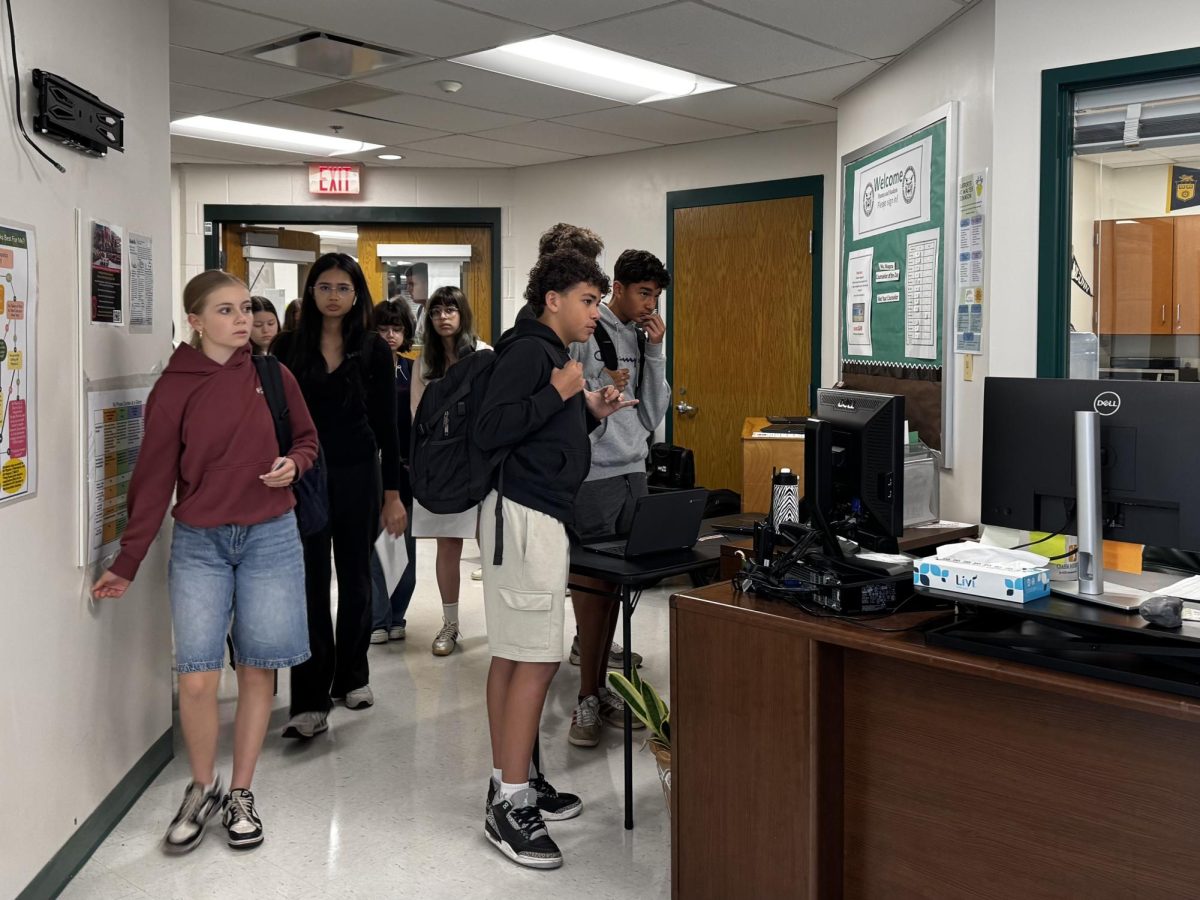Tenure: if you’re familiar with the term, you’re familiar with the stigma.
“Teacher tenure is a code word for ‘teachers are bad, they don’t serve kids well; most teachers are horrible and that’s why the schools are horrible,’” said social studies teacher and Montgomery County Education Association (MCEA) union representative Nathan Schwartz.
The documentary “Waiting for ‘Superman,'” released in October, follows several children who live in less fortunate school districts and are trying to get a better education. The film portrays the teacher’s union and the concept of tenure as detrimental to education, because bad teachers can sometimes easily remain in the school system. According to the film, union protections such as tenure prevent administrators from firing teachers unless they commit serious offenses.
But teacher tenure is more complicated than its stigma suggests.
In many education systems, tenure describes the status of faculty once they have passed their evaluations in their first two years of teaching. Afterwards, it is very difficult, although not impossible, to dismiss them from their positions.
“There’s a myth out there about tenure,” said Principal Christopher Garran. “People think that if you have tenure, you’re untouchable. But [tenure] doesn’t protect [teachers] from being evaluated. And while the goal when you start is always support, if a teacher is truly underperforming and is unwilling to change or unable to change, then they can be removed from their teaching positions.”
However, most students know that there are some teachers who, as the movie suggests, lack real teaching abilities and communication skills.
“They may be nice, but usually their problem is they’re boring or slow or not informed or not engaging,” said junior Dora Illei. “None of the teachers I’ve had have done anything bad enough to be fired on the spot. I just think that if a teacher is incapable of helping an entire class of struggling students, and students across-the-board complain about them year after year, then that teacher needs to be notified and they need to change.”
For those teachers, it may be a while before their behavior is actually forced to change. If there is a complaint about their performance, they have to go through a very long process.
In MCPS, formal evaluations are done by a department chair or assistant principal who comes to a teacher’s classroom to observe and record the proceedings. If a teacher is considered to be “underperforming” in these evaluations, then several people are provided to support him or her. Among them are the staff development teacher, the department chair and the assistant principal assigned to oversee that department. These supports sit in on classes, provide feedback and work with the teacher on lesson plans. If that support system doesn’t seem to be working, then Garran can submit the case to the Peer Assistance and Review group (PAR).
“When you recommend a teacher to that process, they send out a [Professional Growth Consultant (PGC)] who will observe that teacher a couple times, and they then make a determination if the person [should] go into higher levels of support, which the school is recommending, or not,” said Garran.
If the PGC believes that higher levels of support aren’t necessary, then there will be one presentation at which the teacher will discuss his or her performance, a representative from the PAR will discuss the teacher’s performance and Garran will discuss the teacher’s performance.
“You do this to a panel. It’s a rather large group of people, and then they decide whether or not the person should go into the PAR process,” said Garran.
If a teacher is determined to actually go into the PAR process, then additional support will come to the school in the form of another consultant who will manage the case files of the PAR client and provide feedback or training to the teacher.
With this lengthy process, even if a teacher has been considered to be performing poorly and in need of additional support, he or she will still remain in the classroom for a year.
At the end of the process, the teacher will pursue one of three options. The teacher might return to his or her regular position, if the problem has gone away; receive an additional year of support, while remaining in the classroom; or be dismissed if the problem remains.
Part of the reason this process is so complex is to protect teachers from being fired due to baseless claims. But if teachers are allowed to remain teaching for a full year while they undergo the PAR process, then the multiple steps in this process could prevent problem-teachers from being removed as quickly as they should be.
According to MCPS’s 2010 annual report on teacher professional growth, in the past four years, 53 teachers have been recommended for dismissal, 196 teachers have been reassigned and 70 teachers have been recommended for non-renewal by the PAR panel. There are approximately 12,000 teachers in MCPS.
Staff development teacher Amy Vachon has only been in her position for one year, but she has not seen the PAR process at WJ.
“We have used the PAR process [here],” said Garran. “Technically all new teachers are in the PAR process, and then we refer underperforming teachers who require assistance.”
But at WJ, the main goal is always support.
“It’s a very challenging profession,” said Garran. “So I think that when we’re looking at teachers and we’re evaluating them, we have to be very careful that we don’t judge things too early and that we look at a lot of different data.”
According to Vachon, there aren’t many teachers who are not willing to make a change if they are being looked at that closely. Schwartz also said that it is important to remember that the majority of teachers teach because they want to teach and are open to improving.
“People who are in the long haul, people who made it past the five years, are doing this because they actually like to work with kids,” said Schwartz. “And, you know, it’s hard to be a teacher.”














